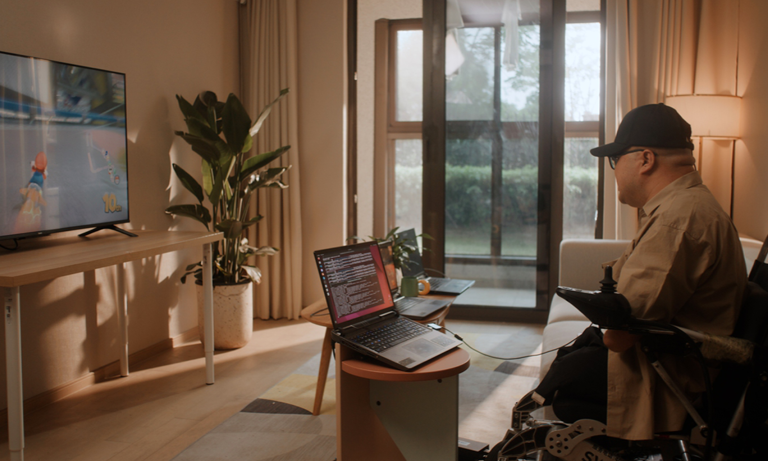
Chinese researchers’ clinical trials for invasive brain-computer interface (BCI) devices in humans just allowed a 37-year-old man who lost all four limbs in a high-voltage accident to play video games using only his mind.
It doesn’t stop there. The team behind the brain chip experiment now hope to develop BCI so that patients can control a robotic arm or artificial intelligence (AI) agent.
China is the second country, after the U.S., to enter the clinical trial phase for invasive BCI technology.
“The electrode is so soft that the force required to bend it is comparable to the interaction force between two neurons in the brain,” said Zhao Zhengtuo, a researcher at the Center for Excellence in Brain Science and Intelligence (CEBSIT) at the Chinese Academy of Sciences, describing the insertion of tiny neural electrodes through a hole in the skull to read brain activity. “This allows the electrode to coexist harmoniously with brain tissue over extended periods without triggering immune responses or rejection reactions.”
Welcome to yet another AI race between China and the U.S. American research teams in testing invasive BCI devices on human patients. Elon Musk’s startup, Neuralink, said it plans are to implant millions of people’s brains with Neuralink chips over the next decade. BCI devices could allow humans to merge with AI, he breathlessly predicted last year, letting people compete with artificial general intelligence.
CEBSIT expects its BCI entrant to be ready for market by 2028 — with the potential to enhance the quality of life for millions of patients suffering from spinal cord injuries, double upper limb amputations, and amyotrophic lateral sclerosis (ALS).
The CEBSIT implant is 26 mm in diameter and less than 6 mm in thickness, or about the size of a coin, making it half the size of the BCI chip developed by Neuralink, according to Zhao Zhengtuo, head of the research team.
Since the device was implanted in the 37-year-old patient in March 2025, it has operated stably in his brain, with no infection or electrode failure reported to date, the research team said. When the patient and others are able to control a robotic arm, they should be able to grasp and hold objects like cups. They will also explore complex devices such as robot dogs and embodied intelligent robots to expand the life boundaries of the patient, researchers said.
Future developments aim to extend control to more complex physical devices such as quadruped robots and embodied intelligent agents, expanding the boundaries of physical independence and interaction.
The achievements of Chinese researchers mark the latest advances in BCI. Last week, a team at UC Davis announced a significant leap in neurotechnology, which enabling a 45-year-old man with ALS to speak again through a brain-computer interface that converts thoughts into speech in real time. Unlike prior systems that translated neural signals into text, however, this one synthesized actual voice with tone, pacing, and even melody, creating a near-conversational experience.
The team even personalized the synthetic voice to sound like the man’s own, by training AI algorithms on recordings of interviews he had done before the onset of his disease.


